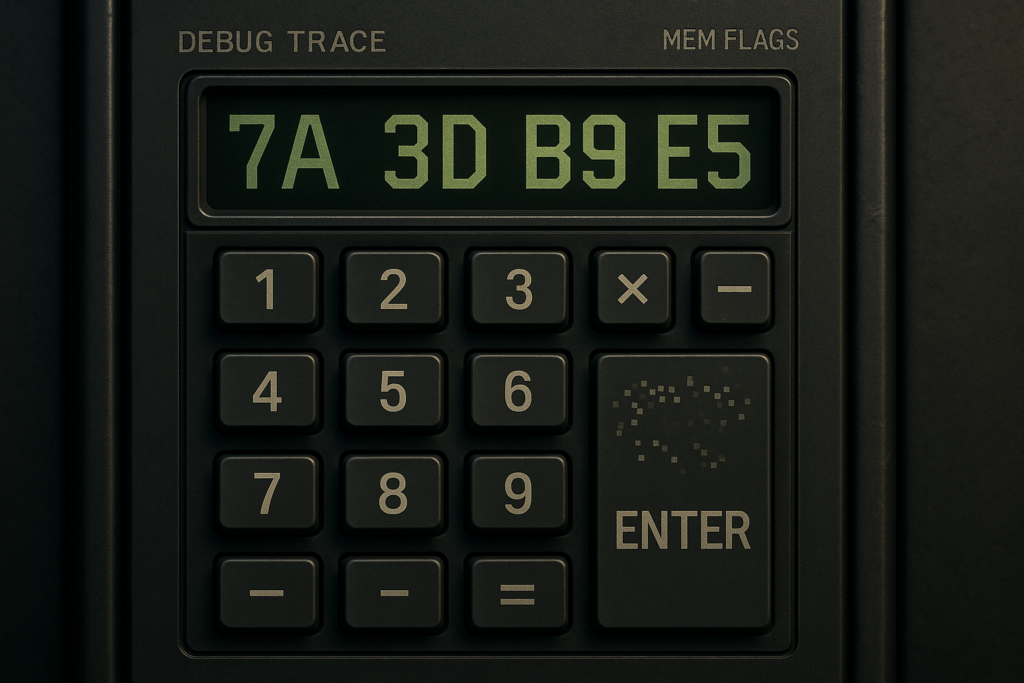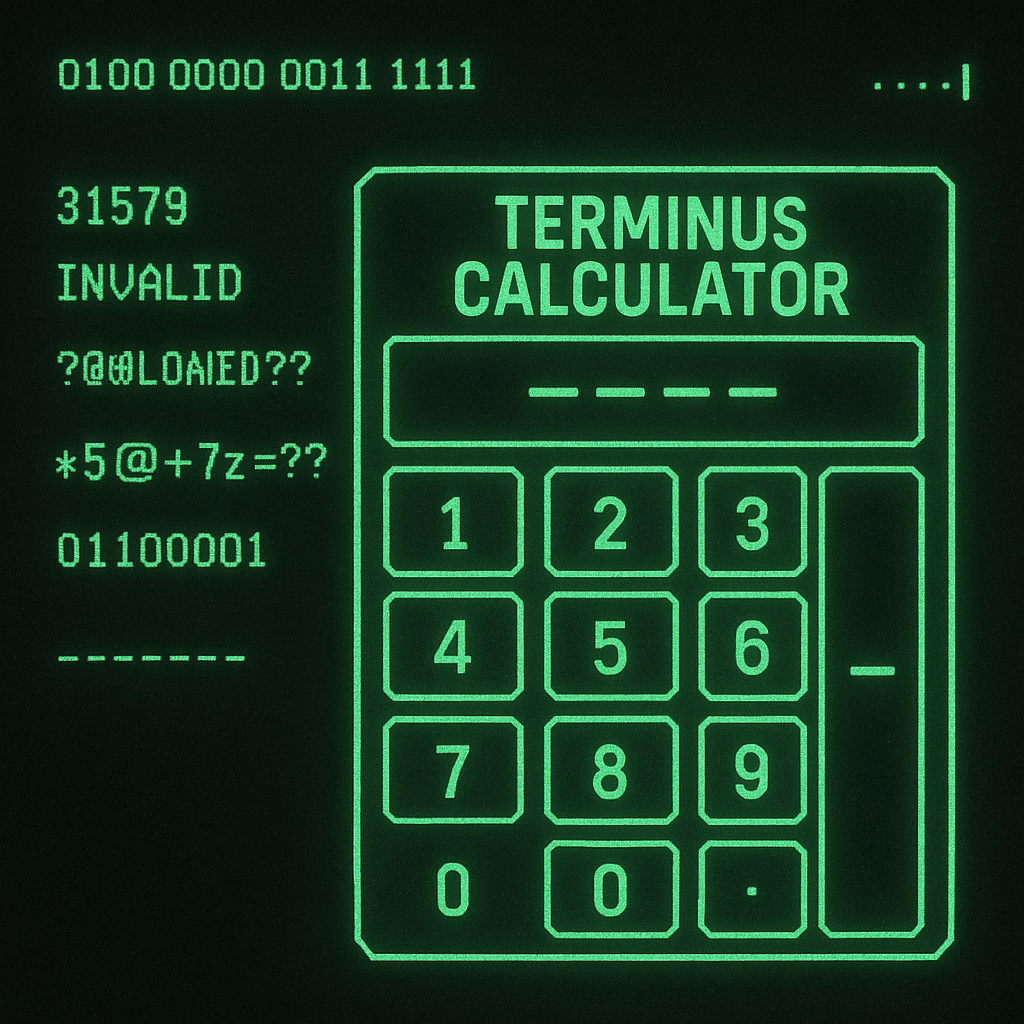Terminus Calculator BO6 Debug Ghost Values: Cracking the Code Behind the Numbers

The Mystery Begins: A Hidden Formula With Real-World Impact
One rainy afternoon, a software engineer named Arman found himself deep inside a dataset that refused to behave. Strange values—zeroes that shouldn’t be zero, fields that flickered between expected and inexplicable—kept surfacing. These were “ghost values,” an infamous anomaly in certain systems running BO6 protocols. According to a 2023 whitepaper by Quantum Stack Labs, “ghost values in transactional systems can lead to 4.2x increase in debug time if left unchecked.”
That’s when Arman turned to the Terminus Calculator—a specialized tool created to parse, diagnose, and debug BO6-level ghost values. At first glance, it looked like a basic input-output utility. But as Arman would discover, it was much more: a scalpel for precision debugging in a chaotic sea of unpredictable data.
What Exactly is the Terminus Calculator?
A Diagnostic Utility for Ghost Values
The Terminus Calculator is not your average calculator. It’s a backend diagnostic tool designed to work specifically with the BO6 (Block Operations v6) framework, widely used in blockchain systems and high-load server applications. What makes it unique is its ability to detect and interpret “ghost values”—transient or non-deterministic outputs that appear during data parsing or system overload scenarios.
Ghost values are especially problematic because they’re not constant. They appear unpredictably, often due to thread-race conditions, temporary memory overflows, or mismatched async callbacks.

Why BO6 Systems Are Vulnerable
The BO6 framework is powerful but complex. It’s designed for high concurrency and rapid micro-block processing, which makes it fertile ground for ghost values if not properly monitored. Traditional debugging tools often fail to capture the moment these values are created.
Here’s where the Terminus Calculator comes in: it doesn’t just show you the symptoms—it reverse-engineers the conditions that led to the anomaly.
Inside the Calculator: How It Works
Inputs, Filters, and the Debug Core
Using the Terminus Calculator is surprisingly straightforward:
- Input: The user provides logs or output strings from BO6 transactions.
- Filters: The tool runs it through a multi-layered analysis using hash checks, parity checks, and time-based signature comparisons.
- Output: A debug trace that highlights ghost value creation points and potential fixes.
One of the most praised features is the debug ghost scanner, which visualizes the ghost value trail—like watching footprints appear on wet concrete.
The Logic Behind Ghost Value Calculation
Ghost values are calculated using a formulaic structure that combines:
- Bitwise operations
- Asynchronous response timings
- Memory leak traces
- Checksum anomalies
Here’s a simplified representation:
The calculator takes care of this math, rendering what used to be a two-hour manual debugging session into a five-minute report.
Real-Life Use Case: Debugging a BO6 Data Relay System
Meet Tessa: An Unexpected Nightmare in a DevOps Shift

Tessa, a backend engineer at a decentralized finance startup, once faced a nightmare just before a major funding demo. Data being pulled from a BO6-powered relay system began returning ghost values in key financial metrics. Time was ticking, and typical debugging tools yielded nothing.
Out of options, she stumbled across a blog post mentioning the Terminus Calculator. Desperate, she uploaded the debug logs—and within minutes, the tool flagged a race condition in the transaction resolver. She applied the recommended fix, and the system stabilized.
The demo went live. The deal closed. And yes, the Terminus Calculator became an internal legend.
What Makes Ghost Values Dangerous?
Silent Errors = Real Consequences
Ghost values are more than just weird outputs. They often:
- Trigger cascading errors in smart contracts
- Invalidate entire datasets in audit systems
- Compromise user-facing APIs, creating false dashboards or broken metrics
A single ghost value in a critical endpoint could mean reporting a balance of $0 for a $10,000 account—something no developer wants to explain to a customer.
Preventative Maintenance via Terminus
By identifying ghost values early in the dev pipeline, Terminus Calculator empowers developers to implement proactive corrections. These may include:
- Refactoring async calls
- Enforcing stronger input validation
- Segmenting memory pools by process
Is It a One-Click Fix? Not Quite—But Close

What You Still Need to Do as a Developer
While the calculator makes detection simple, implementation of fixes still rests with the developer. The tool provides:
- Root cause suggestions
- Potential memory leaks locations
- Line-specific flagging for concurrency risks
But translating those insights into stable code requires expertise. Think of it as a radar system—it shows you where the storm is, but you still have to pilot the ship.
Conclusion
In the unpredictable world of BO6 systems, ghost values are inevitable. But panic isn’t. The Terminus Calculator turns chaos into clarity. It’s fast, reliable, and deeply insightful, built by engineers who understand the nuance of debugging at scale. Whether you’re working in blockchain, fintech, or any high-load system that leverages BO6 protocols, this calculator should be in your toolkit.
Remember Arman and Tessa? They’re not just case studies—they’re you, me, and every developer trying to make sense of a system that sometimes fights back.
FAQs
Q1. What is a ghost value?
Ghost values are unexpected outputs or anomalies that occur during BO6 transaction processing due to memory issues, async delays, or concurrency bugs.
Q2. How does the Terminus Calculator help?
It analyzes BO6 system logs, highlights ghost values, and identifies root causes for easier debugging.
Q3. Is the tool free to use?
Many versions are open-source or available via GitHub, but enterprise versions may require a subscription.
Q4. Can this replace human debugging?
Not entirely, but it dramatically speeds up the discovery process and provides critical insight.
Q5. What systems are compatible with this calculator?
Any system using BO6 or similar block operation protocols, especially in backend, serverless, or decentralized applications.